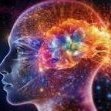Leaderboard
Popular Content
Showing content with the highest reputation on 03/13/24 in all areas
-
As I recall, what I was reading in the studies of student performance was more related to students having to get up early than to negotiating transit in the dark. The problem is that children respond to sunrise and seem to do better cognitively when the light is well advanced and they have had maximum sleep while it was dark or pre-dawn. (the DST effect was especially bad if they were located at the western edge of a time zone, where the sunrise is last to reach) These studies also drew the conclusion that later school hours would be beneficial, even where there was no DST. The Circadian rhythmn actually shifts later during adolescence, so the need there is especially acute. Here's one digest of that research: https://www.apa.org/topics/children/school-start-times2 points
-
MPB is polygenic. One study found at least 63 loci that were associated with the development of MPB, and only a few were on the X chromosome (which was formerly thought to be where MPB was located). I am unclear what "Ys pass it to the X" means, but it doesn't sound like any theory of inheritance I've heard of. https://pubmed.ncbi.nlm.nih.gov/28272467/ Abstract Male-pattern baldness (MPB) is a common and highly heritable trait characterized by androgen-dependent, progressive hair loss from the scalp. Here, we carry out the largest GWAS meta-analysis of MPB to date, comprising 10,846 early-onset cases and 11,672 controls from eight independent cohorts. We identify 63 MPB-associated loci (P<5 × 10-8, METAL) of which 23 have not been reported previously. The 63 loci explain ∼39% of the phenotypic variance in MPB and highlight several plausible candidate genes (FGF5, IRF4, DKK2) and pathways (melatonin signalling, adipogenesis) that are likely to be implicated in the key-pathophysiological features of MPB and may represent promising targets for the development of novel therapeutic options. The data provide molecular evidence that rather than being an isolated trait, MPB shares a substantial biological basis with numerous other human phenotypes and may deserve evaluation as an early prognostic marker, for example, for prostate cancer, sudden cardiac arrest and neurodegenerative disorders.1 point
-
This is one of those “why are things the way they are” that physics can't address, because we can only observe how things behave. Bare charges and their electric field come as a set.1 point
-
Employers care, they want more natural light during working hours, all that free vitamin D makes less sad worker's... The night shift, on their own... 🤞1 point
-
We are still discovering how neurons work and it appears to be more complex then anticipated. For example, neurons found to use many types of vesicles to communicate with other cells, not at the synapse. As for neurons being transistors, they appear to be much more than this. And as for your copyable contention, you know more than me, However, as the empty brain articles indicates, we are not quite sure where or if the information is stored in the brain, so how or could we copy it, remains unanswered. Also, I am unconvinced at this moment that AI or robots will one day be conscious. If it was the case, would we, like in lower life-forms that preceded us, have already begun to see inklings of consciousness in our machines? There may be a fine line separating non-living matter and living matter.The film is superb.1 point
-
Really? Bold by me. If a 'scientific article' cites Deepak Chopra as serious witness, then it is not serious scientific article. Maybe you should read Susan Blackmore: in her student days she had an OBE, and she started a career as 'believing' parapsychologist. But her serious empirical investigations turned her into the end being a sceptic, and leaving the field of parapsychology. I can highly recommend Dying to Live: Science and the Near-death Experience and The Adventures of a Parapsychologist. From the Wikipedia article:1 point
-
1 point
-
I strongly believe that male pattern hairloss is purely genetic, some businessmen like to connect it with other factors like stress, diet or hair treatment products but that is not true. I have been observing hairline and hair quality of many people for a long time and I find that different people could have really different hair quality that do not seem to be affected by any environmental factor. For example, my uncle who is not blood-related to me has four brothers and he is stressful and unhappy all the time, he is over 60 now but his hairline is still nice and perfect and all his brothers don't have any sign of hair loss. My father has lost all his hair and his brothers are all bald, my hair loss started when I was 25.1 point
-
As I said in the first post, "This is an alternative theory of the evolution of the universe, which considers the possibility of the evolution of matter over time, which allows the variation of parameters that we consider constant, but that can vary so slowly over time, which is difficult in our lifetime we notice any change." The definition of the meter length is an anthropological question. The search for a standard measure has always been a problem in human history. The meter has already gone through several definitions to fix its length. I won't talk about it so as not to be prolix. One mistake does not justify another. In this theory, the only thing constant in the Universe is the sizes of the electromagnetic waves emitted. In this context, the only standard measure is the peak of the CMB.-1 points
-
Approximately 100 MegaParsecs ( +/- 50 ), and depending on the distribution of its component galaxies. Great!! Report this to the Shapley Supercluster. It is at 200 mpc. Baseless data. Data with high tolerance and still with undetermined fudge leak factor is unusable. Link, please. That is, at best, a pseudoframe. GR does not allow for a universal, or 'special', frame. Wrong premises of outdated ancient theories, followed by grumpy old. The mechanism was described in the June 16 post. The table, (not copied here), is the complement of it. Childish insult of old gaga when arguments run out.-1 points
-
Dr. Sabom did the operation on Pam Reynolds, but it is not the only case. Because these are related to near death experiences, nobody even bothers to consider them. Eben Alexander also had memory, recognition and emotions on a heavily traumatized brain. Countless "stories" like those. Venture on the "wild' side and visit NDERF; warning - you will be entering Alice in Wonderland. To me, it is not about whether NDE's are real or not, but how mind can still express itself within a severely incapacitated or, possibly, absent brain.-1 points
-
To remove a large aneurysm close to the brain stem that was about to burst. Surgery was not an option due to the position of the aneurysm. A standstill operation (medically induced hypothermic cardiac arrest) was performed. Before the operation, the patient was in a medically-induced near-death state with heart and brain not functioning; body temperature reduced to about 50 degrees, breathing and heartbeat stopped, blood drained from her head, and eyes closed with tape and small ear plugs with speakers placed in her ears to monitor the brain stem and thus ensure that the patient had flatlined. Patient "reported that during the operation, she heard a sound like a natural 'D' that seemed to pull her out of her body and allowed her to "float" above the operating room and watch doctors perform the operation". Critics say that the patient had anesthesia awareness, because part of the operation was under anesthesia alone. Normaly, you don't "float away" during anesthesia awareness, but remain aware in your body. I am not claiming anything, but if this is true then there is a problem with our understanding of the mind-brain connection. Again, many more "stories' of mind functioning under major-major brain duress.-1 points








